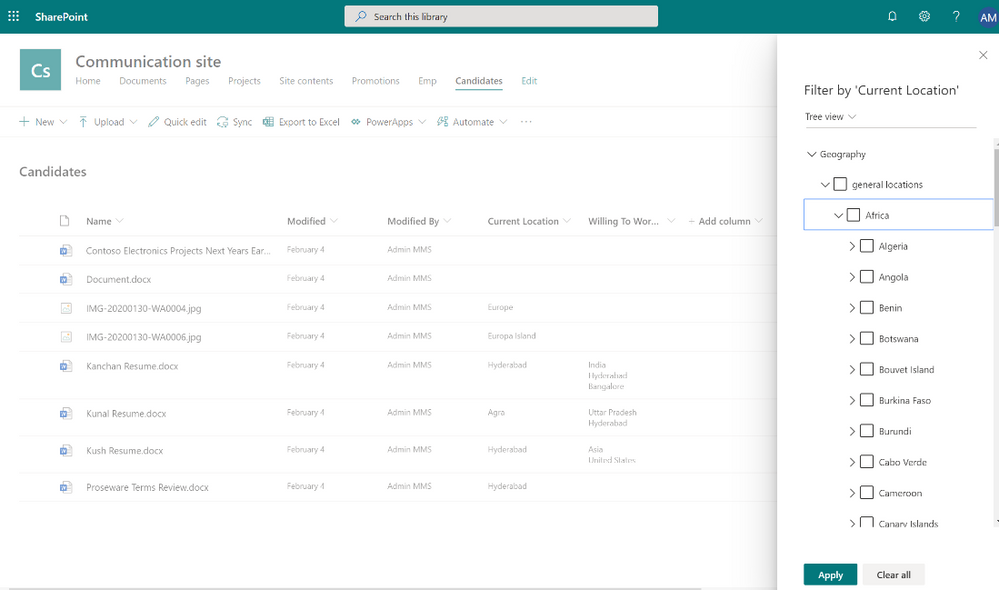Modernizing SharePoint Managed Metadata Services (MMS)
We have completed several SharePoint projects for our clients. From our experience we have found two broad categories of SharePoint users, those that have simply dumped their data in SharePoint and continue to work they way they always have with their previous on premise server. For these clients we often find they miss out on the true value of SharePoint and are unaware of the benefits of the SharePoint platform. Many of these clients land up asking us about other file sharing platforms, and when we ask them why the looking to pay considerable costs for features they can get for free from SharePoint they are simply blown away. If you find yourself in this group, please give us a call or email us by clicking here and we explain how you can take advantage of the amazing built in SharePoint features.
The second group of companies generally have gone through one of our SharePoint migration projects where we take our clients through the core features and benefits, One of which is the tagging of files and use of meta data. To these clients the new update in how SharePoint managed tagging is going to be a great improvement. If you are part of this group please read more about the new changes in a blog post below from Microsoft and if you need any help with making the change please click here to contact us for help.
For organizations, finding and governing content is critical to improve productivity. Content metadata—also called properties, attributes, columns, terms or tags—is essential for information architecture, workflow, and compliance. Managed Metadata Service (MMS) delivers centralized management of taxonomy (hierarchies of tags and terms) and content types. Today, MMS is used to provide a unified set of terms to apply to content in Microsoft 365.
As we prepare for the general release of Project Cortex later in 2020, our first step is to update the MMS in SharePoint. In April 2020, we’ll start to release the following enhancements to Targeted Release:
- A modern term management system in the SharePoint admin center.
- A modern content type gallery in the SharePoint admin center, to create and manage content types in the content type hub.
- An update to the tagging and filtering interface for MMS columns in lists and libraries.
Importantly, these features will require no migration or change to the data—terms or content types—in your existing MMS, but will unlock new capabilities for admins and information workers.
.
Managing taxonomies in the SharePoint admin center
You’ll find the new term manager in the Content services section of the SharePoint admin center, providing modern, integrated controls for the creation and management of organizational taxonomies and glossaries. You’ll be able to work with your preexisting global term sets and create new sets without reconfiguring your existing MMS Taxonomy. We’ve also increased the number of terms supported at a tenant level from 200,000 to 1,000,000.
Figure 1 – Modern taxonomy management
Content type gallery
You can now manage content types in the new content type gallery in the SharePoint admin center.
What’s a content type? Content types create a hierarchy of information categories that you can use to define templates, metadata and document processing rules.
The content type list allows you to group on different columns and save custom views. The content type gallery also streamlines the process of adding, removing or changing custom columns. The new gallery provides a centralized view over content types originally established in the original site-based content type hubs.
Figure 2- Content Type Gallery
Figure 3 – Managing content types
In SharePoint lists and libraries, an updated tree view makes it easier to tag and filter content with terms.
Figure 4 – Managed metadata filtering



